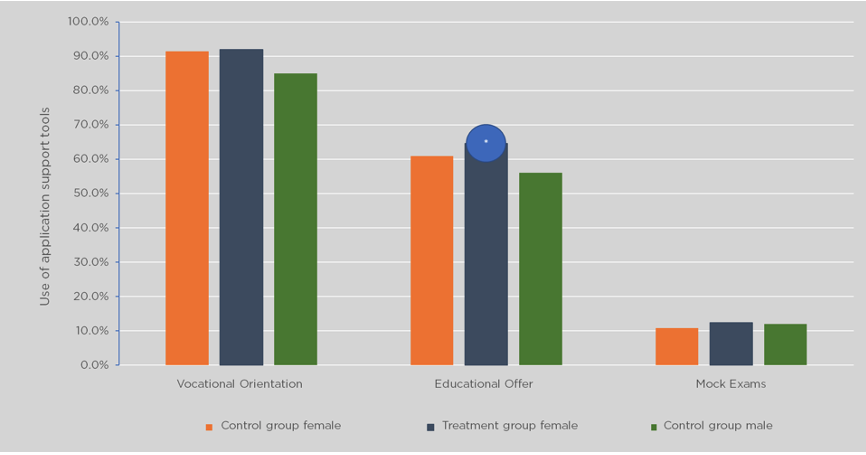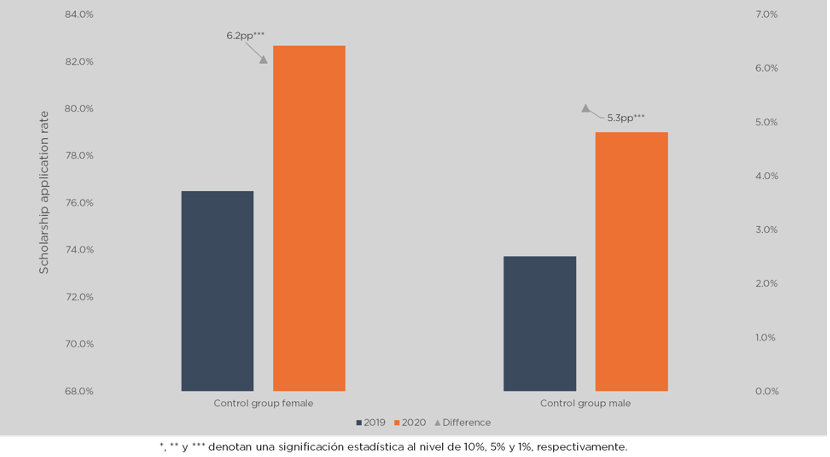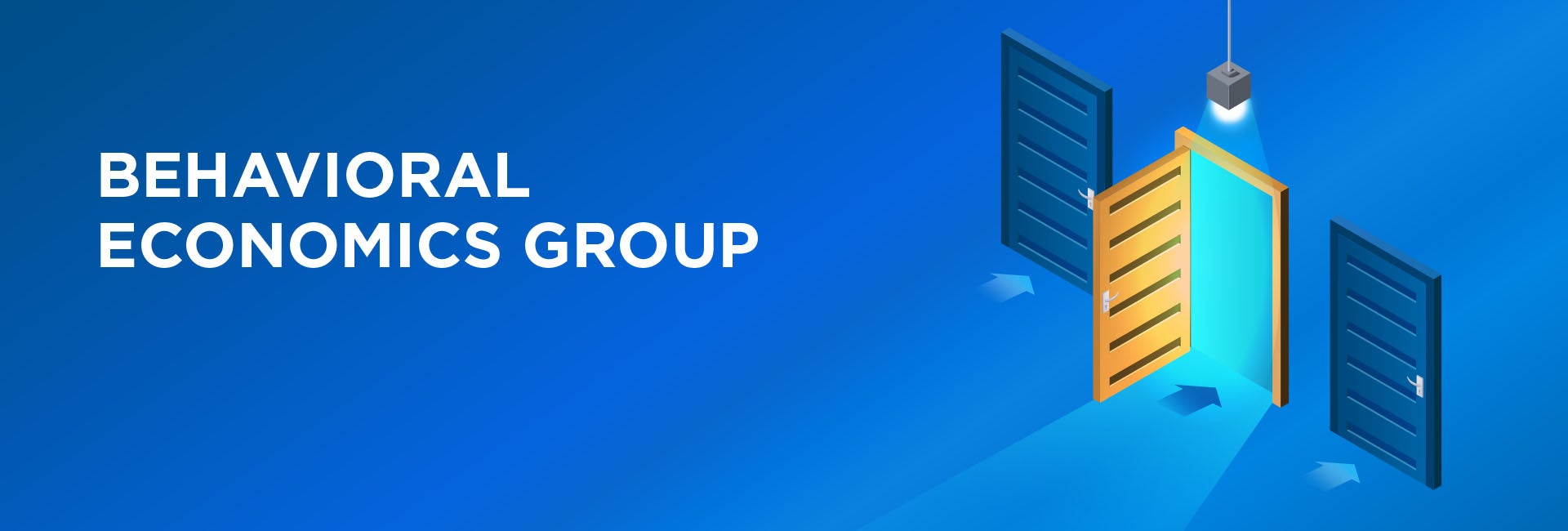Nudging Vulnerable Youth into Higher Education with a Gender Approach

Context
Decisions related to higher education are often made in a context of imperfect information. These decisions are highly complex and are critical in defining students' futures. Students of low socioeconomic status are at a disadvantage because they have less access to information and fewer mechanisms to overcome information imperfections. Moreover, the existence of gender stereotypes and biases can influence this process, particularly when it comes to choosing the type of career and university/educational institution according to its level of demand and quality.
In Peru, the National Scholarship and Credit Program (PRONABEC) offers Beca 18, a scholarship for low-income students with high academic performance to pursue higher education. The program provides tools to guide the process of applying to higher education institutions and career choice, as these are requirements to apply for Beca 18.
The Project
The PRONABEC and the Inter-American Development Bank (IDB) conducted an experimental study to encourage the use of the tools offered by PRONABEC to facilitate the process of choosing and applying to higher education for potential beneficiaries of Beca 18. The final objective was to improve the quality of the application process, encouraging applicants to choose careers with a high economic return and quality educational institutions in 2020, with particular emphasis on women.
Behavioral Analysis
Behavioral Barriers
Lack of confidence: Women tend to have a less positive view of their academic performance and abilities than men. These seem to be explained by differences between men and women in risk and competition aversion. In the context of Beca 18, women's lack of self-confidence could, among other things, be responsible for their selection of less competitive and challenging careers and institutions.
Gender stereotypes affecting career choice: Cultural beliefs, historical conditions, social norms, and social image inform the (often implicit) gender stereotypes and biases that define the roles that each individual performs in society. In this context, traditional gender stereotypes could be the cause of selecting fields of study associated with stereotypically female jobs, which tend to have lower economic returns. For example, women are less likely to select STEM fields (science, technology, engineering, and mathematics).
Lack of information: The process of calculating the selection score, although public, is complex. For this reason, PRONABEC offers an educational offer tool that provides detailed and easy-to-understand information about the consequences of choosing a career-education institution on the selection score (concrete examples and possibilities of comparison between choices).
Behavioral Tools
Framing: Given the tendency to draw different conclusions depending on how information is presented, the desired options can be presented to emphasize the relevant part of the information, as well as to highlight the positive or negative aspects of a decision, leading an option to be perceived as more or less attractive.
Reminders: they may consist of an email, text messages, a letter, or a personal visit to remind the person making the decision about some aspect of their decision-action. Reminders aim to mitigate procrastination, forgetfulness, and cognitive overload for those who must make the decisions.
Salience: Our attention is limited. Therefore, behavioral economics pays special attention to the moment when a message is delivered, the location at which it is delivered, and the content it emphasizes. Making key elements visible and prominent at the proper time and place is vital and just as important as the central content of the message itself.
Simplification: reducing the effort required to perform an action by making the message clearer, cutting the number of steps, or breaking down a complex action into simple, more manageable steps.
Social norms: are the unwritten rules that govern behavior within a society. A distinction is made between "descriptive norms," which describe how individuals tend to behave (e.g., "most people are on time"), and "prescriptive norms," which state what is considered acceptable or desired behavior, regardless of how individuals actually behave ("Please be on time").
Intervention design
The intervention consisted of sending reminder text messages to all pre-selected applicants during the application process that began on January 6 and ended on March 1, when the electronic application closed. The messages promoted using the tools available in PRONABEC's Support and Orientation Platform-PAO to assist in the application phase (vocational orientation (OV), educational offer, (EO), and mock exams (S)) as well as reminders of important dates.[1]
Women were randomly assigned to a treatment group and a control group to assess which text messages promoted higher economic return careers and quality educational institutions choices. Both groups, as well as men, received the basic reminders. Women in the treatment group also received self-confidence messages to motivate them to act. The messages were worded considering framing tools, salience, and social norms.
Summary of the intervention
- Duration: 6 weeks, from January 17 to February 27
- Method: reminders in the form of text messages
- Addressed to all shortlisted applicants: men and women.
- Three groups are identified among those shortlisted.
- Men receiving standard messages (4,389)
- Women receiving standard messages (control group 1,871)
- Women receiving differentiated messages (treatment group 1,872)
Challenges
- The intervention was designed to ensure that no applicant would be disadvantaged, so all shortlisted applicants received messages with information about the application process and the PAO tools' benefits. Therefore, we could not evaluate the impact of the informational messages on the percentage of pre-selected applicants who applied for the scholarship.
[1] PAO is a platform that offers three tools for pre-selected students: 1) a vocational orientation test, 2) information on higher education institutions and fields of study offered in the country, and 3) mock university entrance exams for students to practice and review the content typically assessed by these exams.
Results
- The self-confidence and motivation messages sent to the treated women significantly increased the use of the mock exams -one of the three PAO platform tools-, especially on the same day when the vocational orientation tool was used. Differentiated messages to treated women more than doubled the likelihood of using the mock exams on the day of the career counseling and increased the number of times shortlisted women took the mock exams.
- The intervention also increased the use of the educational offer tool, but only for "graduated" women, i.e., those who applied for the scholarship after graduating from high school rather than in their last year of high school (see Figure 1). In this group, the use of the educational offer increased by 3.9 percentage points (pp), for a 10-percent level of significance).
Figure 1. Use of PAO Tools by Female Graduates.

- Although the messages fail to have a differentiated effect on the use of the EO tool, they affect the time at which it is used. Daily EO use and simulations after each message sent shows that use by treated women increases on days after receiving a message only when differentiated messages specifically mention that tool. Also, mock exam use does not increase significantly with any particular message, suggesting that EO's effect is indeed responsive to the content of the message.
- However, the intervention did not affect the vocational orientation tool's use, did not reach levels of statistical significance (OV), and failed to change the probability that a woman would apply for or win Beca 18.
- We find that women who received the messages apply to lower-quality institutions than women who did not receive the treatment. Fortunately, these differences do not translate into significant differences in the selection score and therefore do not affect the probability of winning the scholarship. We did not find a significant effect on the selection of high-return careers.
- The descriptive analysis showed that in 2020, women's scholarship application rates (both those who received the motivation and confidence messages and those who did not) exceeded those of men. In addition, compared to the previous year's results, application rates increased 6.2 pp for women while they only increased 5.3 pp for men (Figure 2).
Figure 2. Changes in Application Rates between 2019 and 2020.

Policy Implications
- For women, the intervention did not significantly increase either scholarship applications or the probability of winning scholarships in comparison to the control group. However, the descriptive analysis results show that the 2020 application rate was higher for women than for men. Although the rates increased for both men and women, the increase for women is higher. This descriptive finding suggests that there may be heterogeneous responses to messages by gender. Given the low cost of text messaging, it would be useful to explore the causal effect of informational messages and the possibility of a greater response by women.
